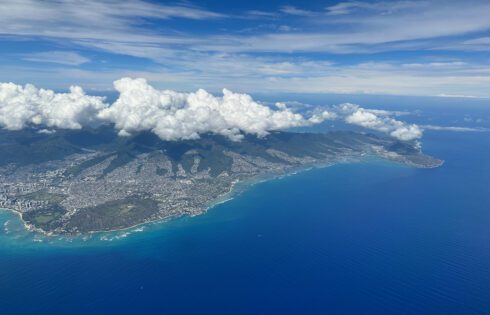
Denver Confluence Park Ultimate Guide: Historic Waterways & Trails Await
Confluence Park is one of the major attractions in Denver. Every day, it attracts lots of people looking to enjoy some nice scenery and perhaps partake in some exercise or

Confluence Park is one of the major attractions in Denver. Every day, it attracts lots of people looking to enjoy some nice scenery and perhaps partake in some exercise or

New Mexico is known for its vast, open high desert lands. What’s remarkable about these open expanses is what you might encounter along the way. Whether it’s the Trinity Site

Exploring the local culinary scene while traveling never fails to pique my interest. Be it unearthing the charm of a Boston Cooler, indulging in pasties, or savoring the uniqueness of

Oahu, the vibrant and widely visited Hawaiian island, boasts the distinction of being home to the state capital, Honolulu. However, the island’s actual size often leaves people wondering about its

The movie “Oppenheimer” is poised to create a new wave of interest in the atomic era, delving into the captivating narrative surrounding the development of the atomic bomb and its

If you are headed to Hot Springs National Park in Arkansas, chances are that you want to experience the wonderfully historic and therapeutic waters of the hot springs. But there

Jurassic Park is one of the most epic movies of our generation and it’s approaching its 30th year anniversary in 2023. One of the coolest parts about this film is

You hear the words “Possum Pie,” and your mind instantly conjures images of a concoction featuring the notorious marsupial. Yes, for those curious possums are North America’s only marsupial. But

When you find yourself in Boston, there’s no shortage of things to dive into. Whether it’s tracing the historic Freedom Trail, meandering down the charming Acorn Street, savoring delectable cannolis,

Hot Springs Arkansas has a very storied bathing tradition with several beautiful and historic bathhouses located on the famous “Bathhouse Row” which also happens to be part of Hot Springs
| Cookie | Duration | Description |
|---|---|---|
| cookielawinfo-checkbox-analytics | 11 months | This cookie is set by GDPR Cookie Consent plugin. The cookie is used to store the user consent for the cookies in the category "Analytics". |
| cookielawinfo-checkbox-functional | 11 months | The cookie is set by GDPR cookie consent to record the user consent for the cookies in the category "Functional". |
| cookielawinfo-checkbox-necessary | 11 months | This cookie is set by GDPR Cookie Consent plugin. The cookies is used to store the user consent for the cookies in the category "Necessary". |
| cookielawinfo-checkbox-others | 11 months | This cookie is set by GDPR Cookie Consent plugin. The cookie is used to store the user consent for the cookies in the category "Other. |
| cookielawinfo-checkbox-performance | 11 months | This cookie is set by GDPR Cookie Consent plugin. The cookie is used to store the user consent for the cookies in the category "Performance". |
| viewed_cookie_policy | 11 months | The cookie is set by the GDPR Cookie Consent plugin and is used to store whether or not user has consented to the use of cookies. It does not store any personal data. |
